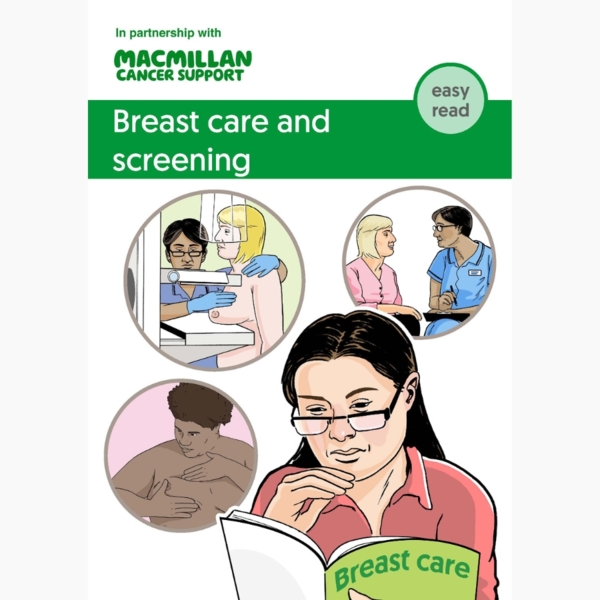Mammogram
What is a mammogram?
A mammogram is a low-dose x-ray of the breast. It is done by a radiographer. This test can be used to help diagnose breast cancer and ductal carcinoma in-situ (DCIS). It is also used as part of follow up to check the breasts.
Mammograms are usually offered to people over the age of 40. When you are younger, your breast tissue is denser (has less fat). This makes it more difficult to detect any changes on the mammogram.
If you are under 40, you are usually offered an ultrasound of the breast. If breast cancer is confirmed or suspected, you will usually also have a mammogram.
Having a mammogram
You will need to undress down to your waist. You usually have the mammogram standing up. Or you can have it sitting in an upright position if you are not able to stand.
- The radiographer will position you so your breast is on the x-ray machine.
- Next, your breast will be firmly pressed with a flat, clear, plastic plate. This keeps your breast still and helps get a clear picture. You might find this uncomfortable or even painful. But it should only last for as long as the mammogram takes. This is usually only a few minutes.
- You will have 2 x-rays of each breast taken from different angles. This helps make sure as much of the breast is x-rayed as possible. If you have very large breasts, you may need extra x-rays to make sure all the breast tissue is included.
Related pages
Booklets and resources
Getting your mammogram results
If your doctor arranged for you to have a mammogram, they can explain when your results will be ready.
If your mammogram was done as part of breast screening, you usually get your results in a letter.
Waiting for test results can be a difficult time. It may take from a few days to a couple of weeks for the results of your tests to be ready. You may find it helpful to talk with your partner, your family or a close friend. Your specialist nurse can also provide support. You can also talk things over with one of our cancer support specialists on 0808 808 00 00.
About our information
-
References
Below is a sample of the sources used in our breast cancer information. If you would like more information about the sources we use, please contact us at cancerinformationteam@macmillan.org.uk
ESMO. Early breast cancer clinical practice guidelines for diagnosis, treatment and follow-up. 2019, Vol 30, pp1192–1220. Available from: https://www.esmo.org/guidelines/guidelines-by-topic/breast-cancer/early-breast-cancer [accessed 2023].
National Institute for Health and Care Excellence (NICE). Early and locally advanced breast cancer: diagnosis and management. 2018. Updated 2023. Available from: https://www.nice.org.uk/guidance/ng101 [accessed 2023].
-
Reviewers
This information has been written, revised and edited by Macmillan Cancer Support’s Cancer Information Development team. It has been reviewed by expert medical and health professionals and people living with cancer. It has been approved by Dr Rebecca Roylance, Consultant Medical Oncologist and Professor Mike Dixon, Professor of Surgery and Consultant Breast Surgeon.
Our cancer information has been awarded the PIF TICK. Created by the Patient Information Forum, this quality mark shows we meet PIF’s 10 criteria for trustworthy health information.
The language we use
We want everyone affected by cancer to feel our information is written for them.
We want our information to be as clear as possible. To do this, we try to:
- use plain English
- explain medical words
- use short sentences
- use illustrations to explain text
- structure the information clearly
- make sure important points are clear.
We use gender-inclusive language and talk to our readers as ‘you’ so that everyone feels included. Where clinically necessary we use the terms ‘men’ and ‘women’ or ‘male’ and ‘female’. For example, we do so when talking about parts of the body or mentioning statistics or research about who is affected.
You can read more about how we produce our information here.
Date reviewed

Our cancer information meets the PIF TICK quality mark.
This means it is easy to use, up-to-date and based on the latest evidence. Learn more about how we produce our information.




